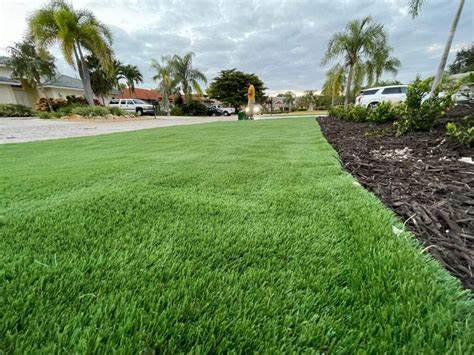How To Choose The Right Infill Material For Artificial Grass In San Diego?

- Infill serves several vital functions in an artificial grass installation. It helps maintain the structure and stability of the turf, preventing it from becoming flat or matted over time. Infill also adds weight to the grass, helping it stay in place, especially in windy areas. Perhaps most importantly, infill provides cushioning and shock absorption, making your artificial lawn safer for activities and reducing the risk of injury. Understanding these functions will guide you in selecting the most suitable infill material.
- Different infill materials are designed for specific applications and conditions. If you’re installing artificial grass in a high-traffic area like a playground, sports field, or pet area, you’ll need an infill material that can withstand heavy use and provide excellent shock absorption. For these situations, rubber infill or silica sand mixed with crumb rubber may be ideal. On the other hand, if you’re primarily concerned with aesthetics and minimal maintenance, an acrylic-coated sand or a natural sand infill may be more appropriate.
- Climate and drainage play a crucial role in the choice of infill material. In areas with heavy rainfall, it’s essential to select an infill that won’t clump or compact, as this can lead to poor drainage and mold growth. In arid regions, you’ll want an infill that can help keep your artificial grass cool and comfortable under the sun. Zeofill, for example, is an infill material that can absorb and release moisture, making it suitable for both wet and dry climates.
- The safety of your family, pets, and the environment should always be a top priority when choosing infill material. Some infills made from recycled rubber may contain harmful chemicals or emit odors. If you’re concerned about potential health risks, consider alternatives such as organic or natural infill materials. Additionally, look for infill materials that are non-toxic, non-allergenic, and environmentally friendly.
- Choosing the right infill material can be a complex decision, and it’s often best to consult with a professional who specializes in artificial grass installations. They can assess your specific needs, provide recommendations based on your location and usage, and ensure that your artificial grass project is a success. Professionals also have access to a variety of infill materials and can help you make an informed choice that fits your budget.
FAQs
Can I Use Regular Sand As An Infill Material For My Artificial Grass?
While regular sand may be used as an infill material, it is not the best choice for most installations. Specialized infill materials like acrylic-coated sand or crumb rubber offer better performance, drainage, and safety properties for artificial grass.
Are Rubber Infills Safe For Pets And Children?
Rubber infills can be safe for pets and children if they meet safety standards and regulations. It’s essential to choose rubber infills that are non-toxic and have been tested for safety. Discuss your concerns with your artificial grass installer to ensure a safe choice.
How Often Should I Replace The Infill Material In My Artificial Grass?
The lifespan of infill material can vary depending on factors like usage, climate, and the quality of the infill. On average, infill may need to be replenished or replaced every 5-8 years. Regular maintenance and professional assessments can help determine the right timing for infill replacement.
Conclusion
In conclusion, selecting the right infill material for your artificial grass is a crucial decision that impacts the appearance, performance, and safety of your synthetic lawn. By understanding the purpose of infill, considering your specific needs, factoring in climate and drainage conditions, prioritizing safety and health, and seeking professional advice, you can make an informed choice that ensures your artificial grass project is a long-lasting success. For more information, contact Artificial Grass San Diego at (619) 784-8855.

